Glorious days, my friend. Rejoice —for hunting season is upon us! And Thanksgiving!
Last year we rooted through the history of Thanksgiving and unearthed the key role that fresh game played in early celebrations. Need a refresher click “here.” This year let’s bolt straight to the game!
As I laze about my luxurious deer stand and soak in a beautiful sunset, I’m reminded of the first bountiful deer hunt I witnessed. My brothers and I began hunting when we were young —but for a few years it was mostly hunting without much finding. Then one of the Boar’s younger brothers changed everything: he shot a deer—a small buck.
Excitedly, he exclaimed, “I got one! I got one!” And was met with a chorus of “one what?”
Speaking of moments of unexpected delight, last weekend at our deer camp I announced that we would enjoy a feast of venison Osso Buco. And I too was met with a chorus of “say what?”
Venision Osso Buco
Venison shanks
Flour (about a quarter cup —I used gluten free for this creation)
Two slices of smoked bacon (chopped)
Two sweet onions (chopped)
Four stalks of celery (chopped)
Four carrots (chopped)
One head of garlic (chopped)
Red Wine (about a cup —I used a Cabernet Sauvignon)
Crushed plum tomatoes (like San Marzano –24 oz jar)
Beef Broth (around two cups)
Kosher Salt
Black Pepper
Fresh thyme (several sprigs)
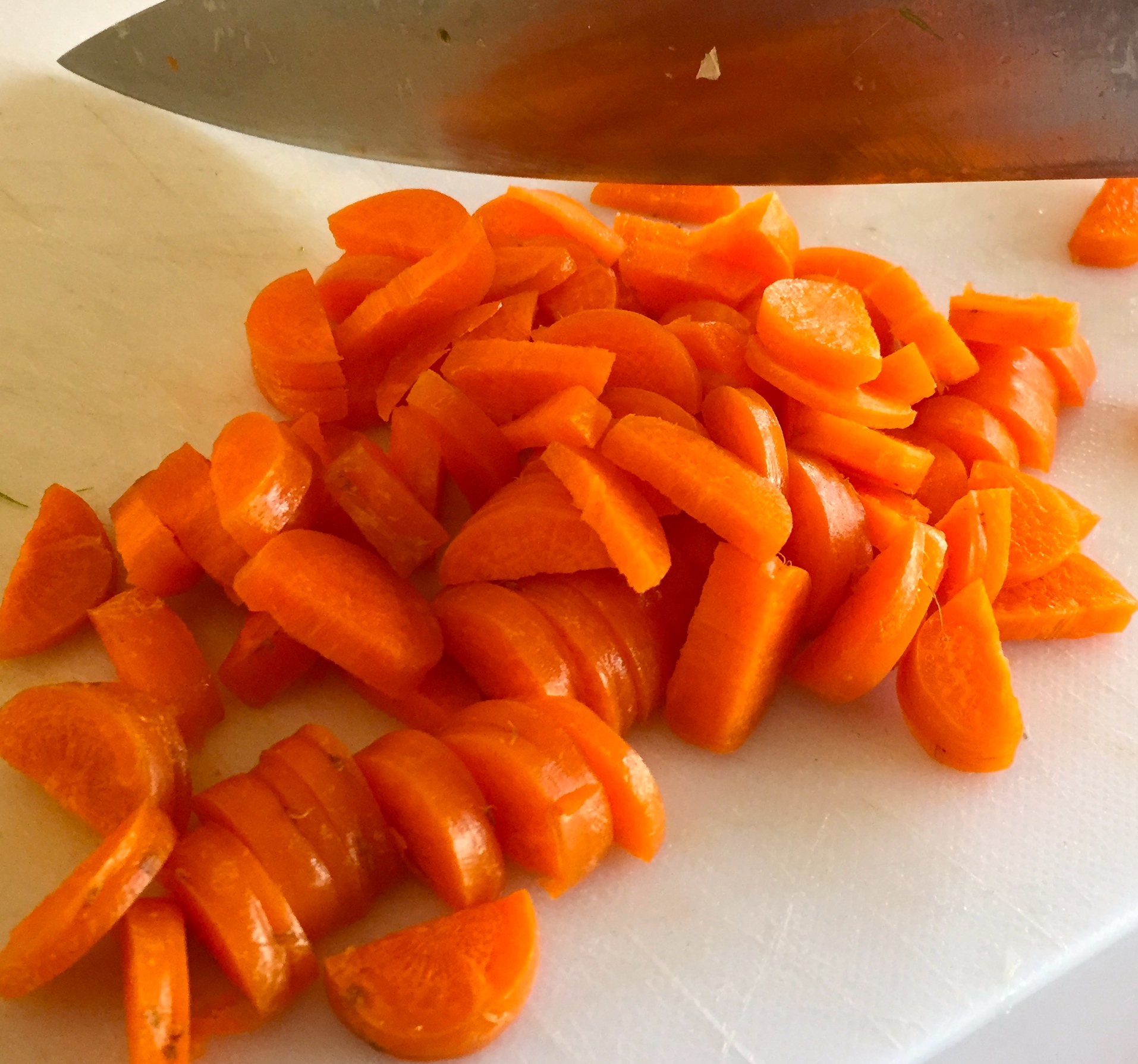
Osso Buco is an Italian creation featuring shank (veal, pork, lamb —or venison) braised in a tomatoes and wine until the meat, draped with the thickened vegetable-laden sauce, barely clings to the bone. How about we ladle a bit of that on some mashed potatoes?
This dish starts by cutting off the shank of the hams and shoulders of the deer. I used four ham shanks and four shoulder shanks. As you can see from the pictures, I did not cut them the same but they ranged from three inches to five inches long. Next, tie each shank with butcher twine so that they will stay together during the long cooking process. Season the shanks heavily with kosher salt and black pepper. Dust them lightly with the flour to assist with browning and thickening of the sauce.
In a heavy pot brown the bacon pieces over medium heat and then remove them from the pot and reserve for later.
Now, increase the heat to medium-high and brown each of the shanks (making sure to turn the shanks to allow each side to brown) in the bacon grease. Be sure not to overcrowd the pot as they will not brown very well. Set the shanks aside once they are browned.
Add the vegetables to the pot and sauté them until soft (ten to fifteen minutes). Note: you can add a little vegetable oil during this step if it appears you do not have enough to coat the vegetables.
Deglaze the pot with the red wine. Scrape all of the meat bits from the bottom of the pot and allow the alcohol to cook off —about five minutes.
Pour the tomatoes and beef broth into the pot. Stir the sauce to make sure everything is incorporated and bring to a low simmer.
Place the shanks back into the pot and roll each over in the sauce to coat. Add the bacon pieces and thyme sprigs on top and bring back to a simmer. Cover the pot with a tight fitting lid.
For fall off the bone tenderness, this creation needs a long cook (two to four hours). You can either finish cooking by keeping it over a low flame or in an oven set at 350 degrees.
Once the shanks reach the desired tenderness, thicken the sauce by uncovering the pot and simmering until the sauce reduces –we are looking for a chunky, sticky consistency.
This creation pairs well with mashed potatoes or buttered noodles. To serve, place the potatoes (or noodles) on the plate and then top them with a shank. Lastly, ladle sauce and vegetables on top.
Give thanks for the unexpected delights, my friend.

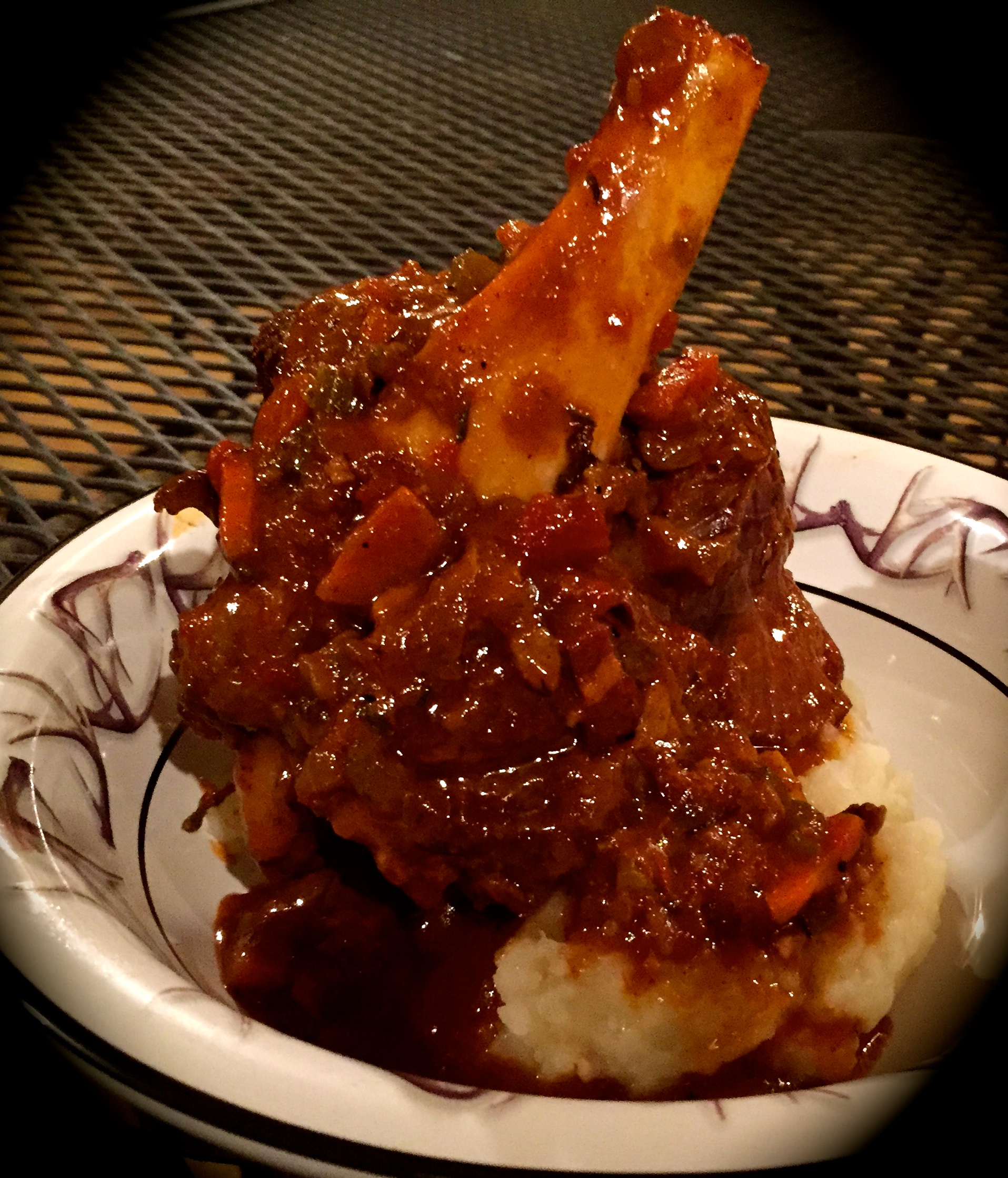
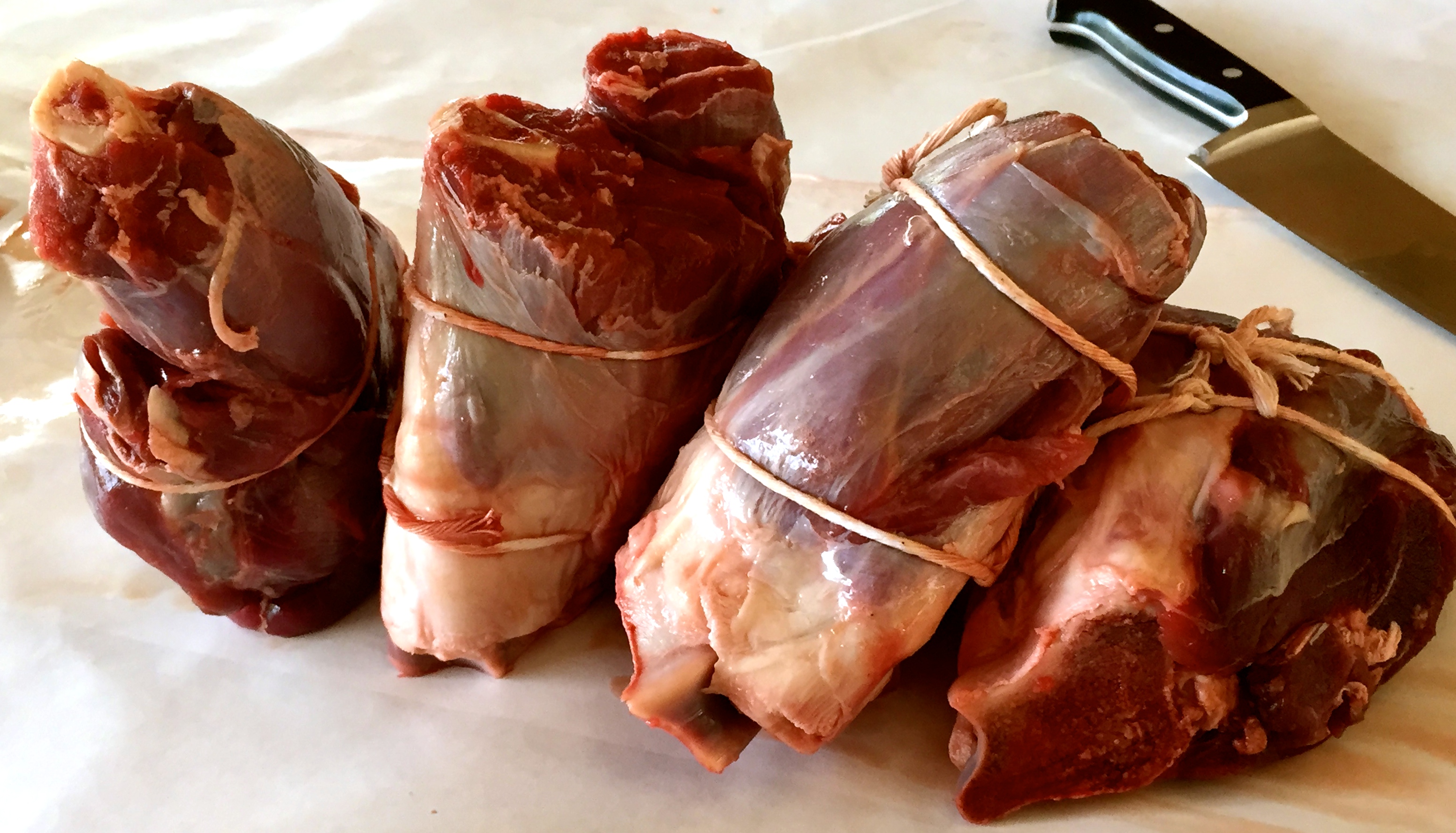
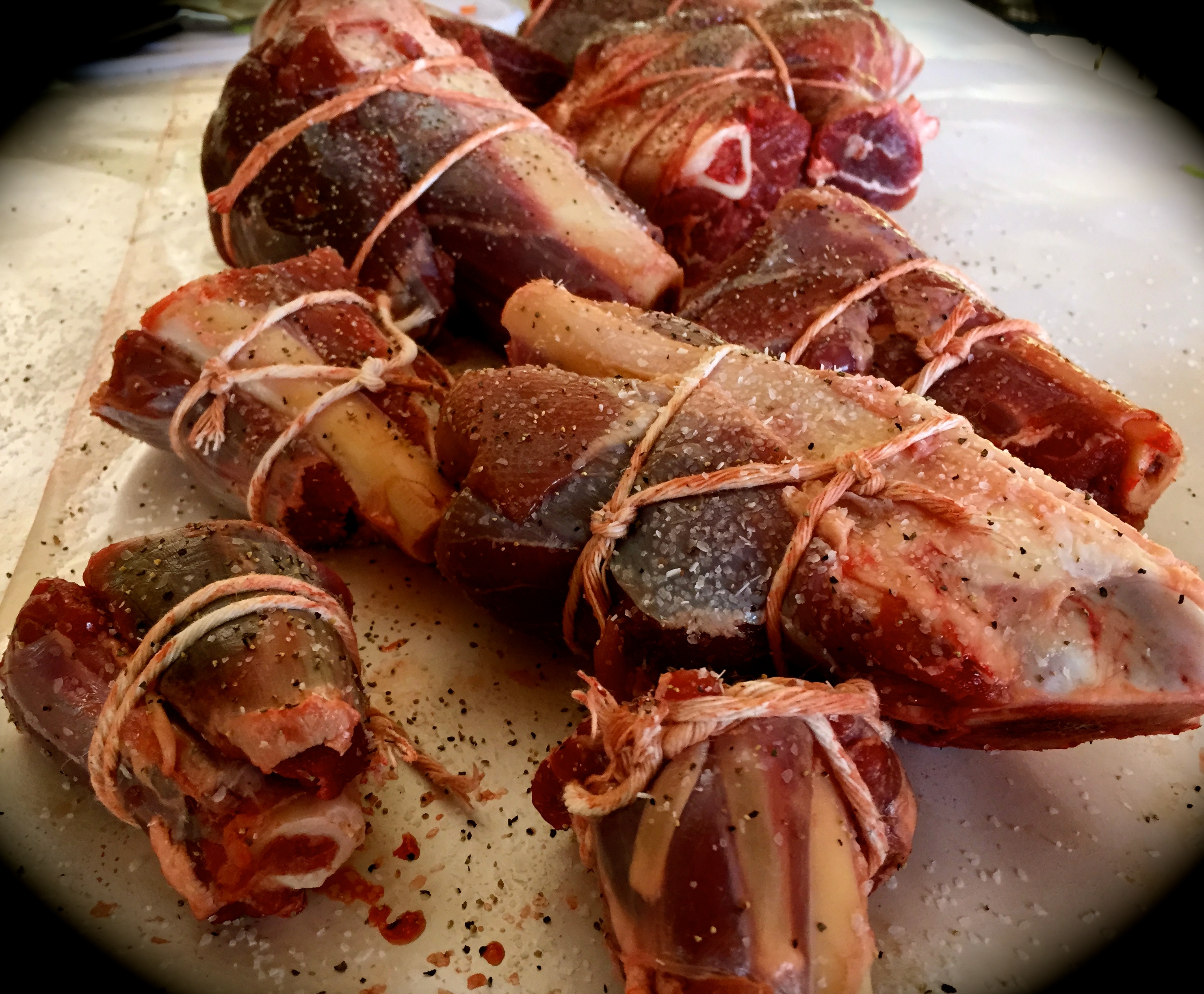
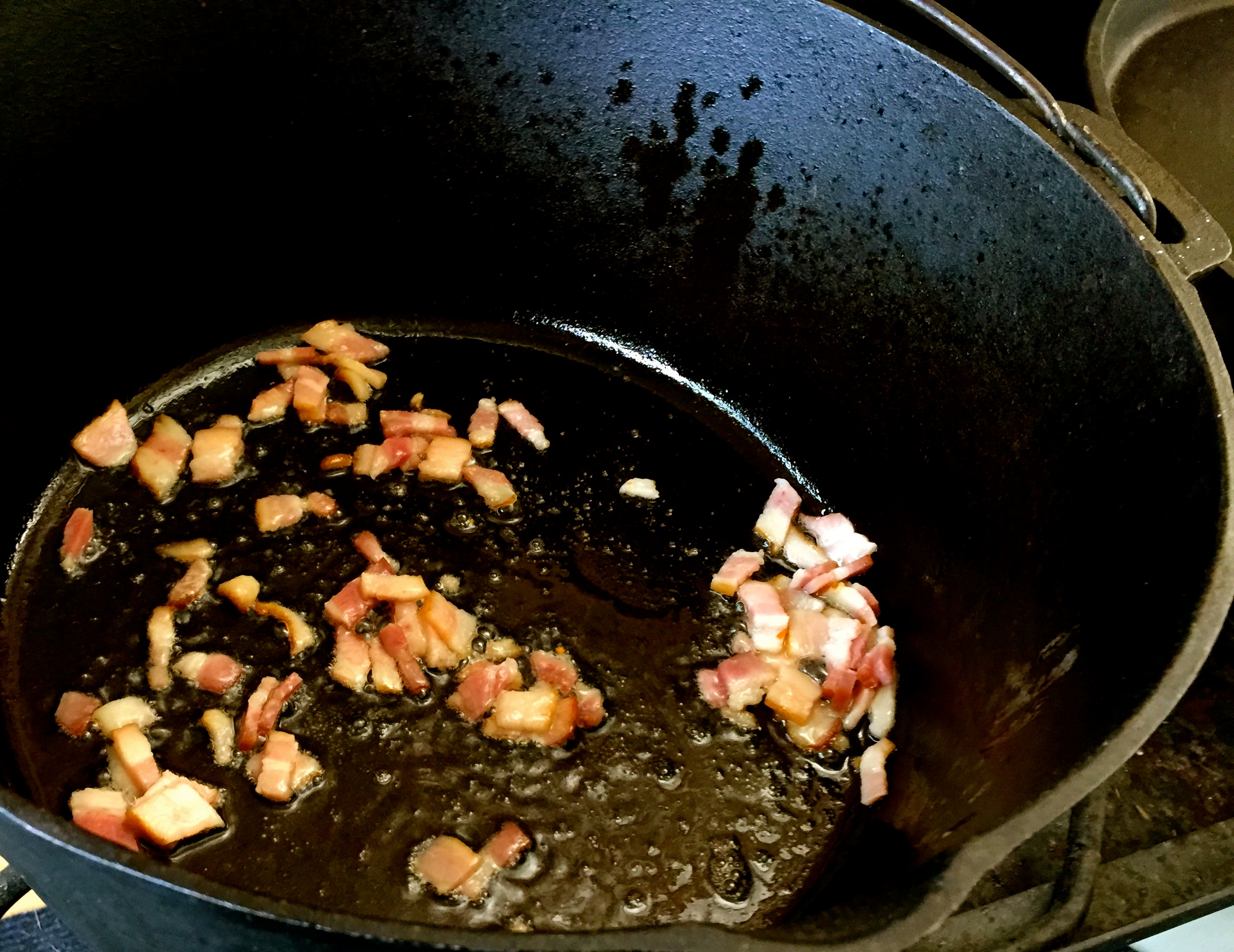
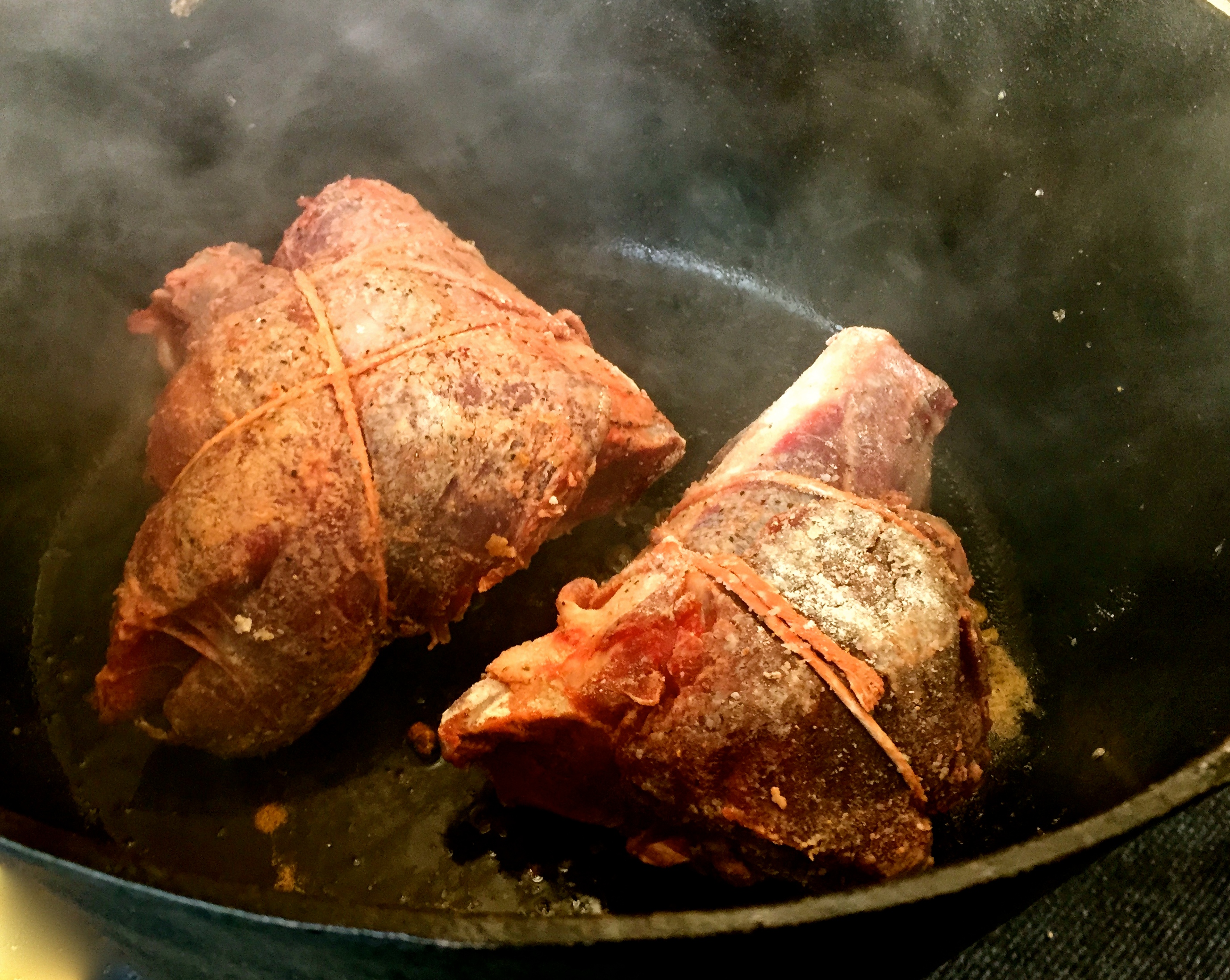
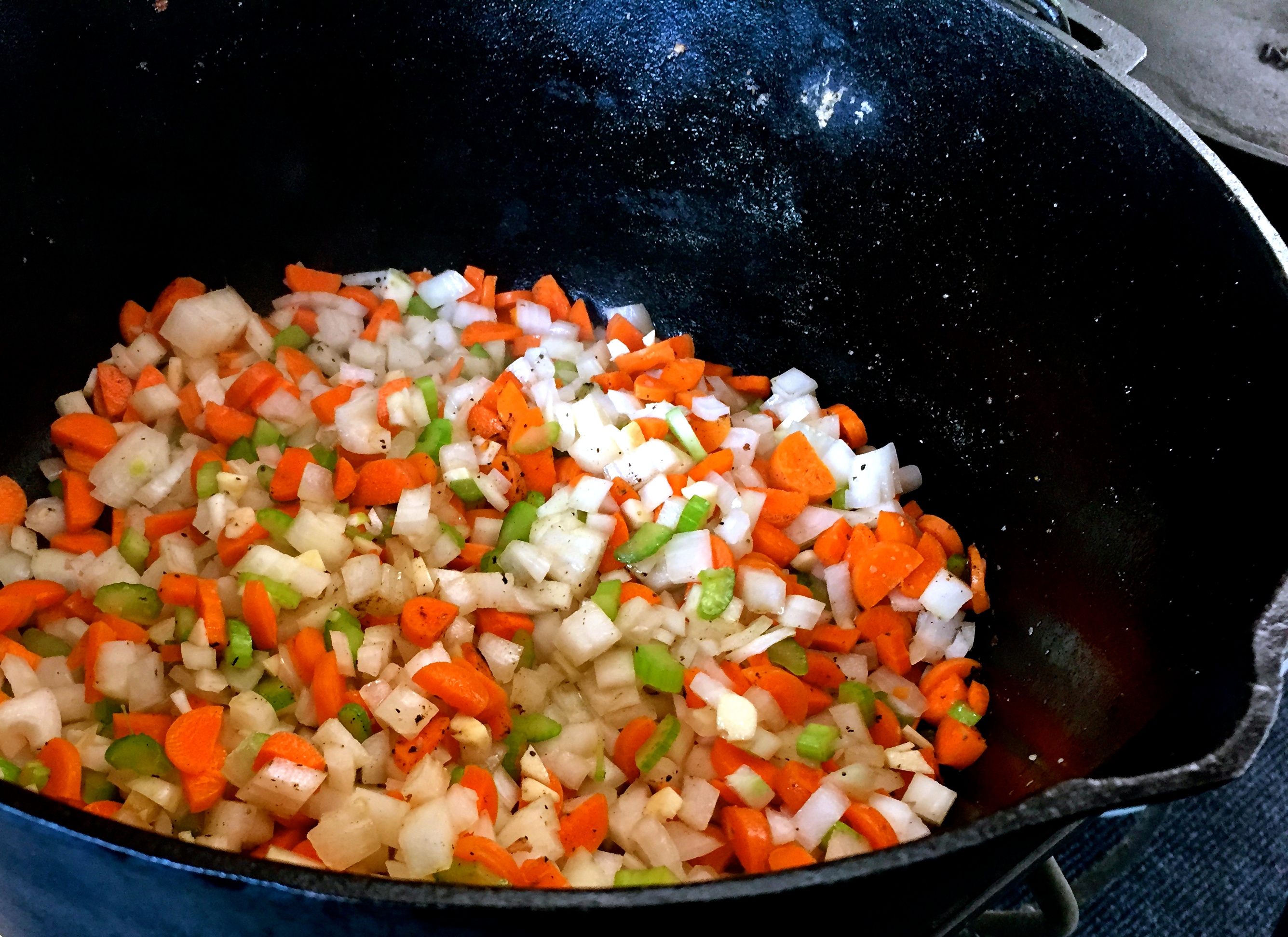
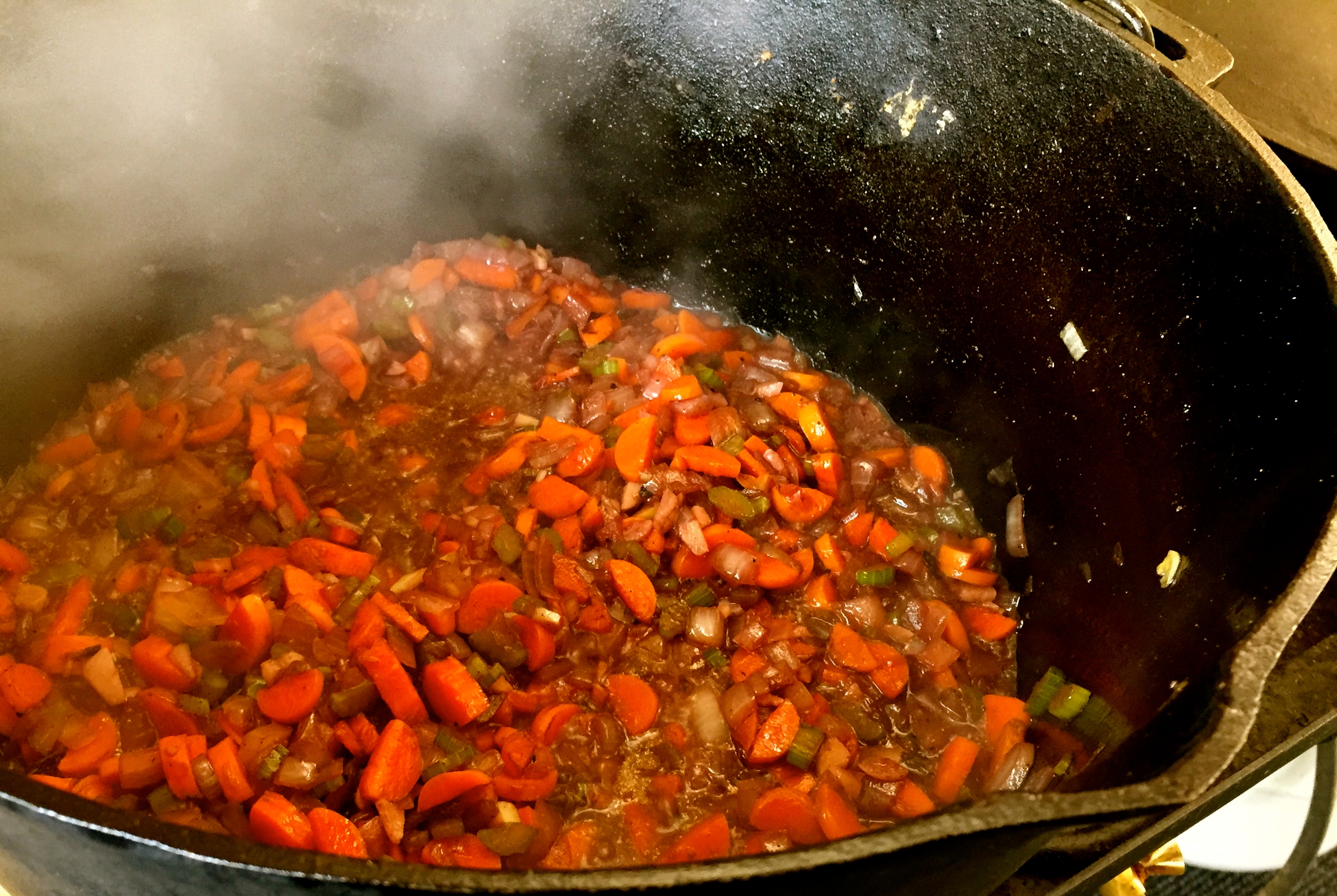
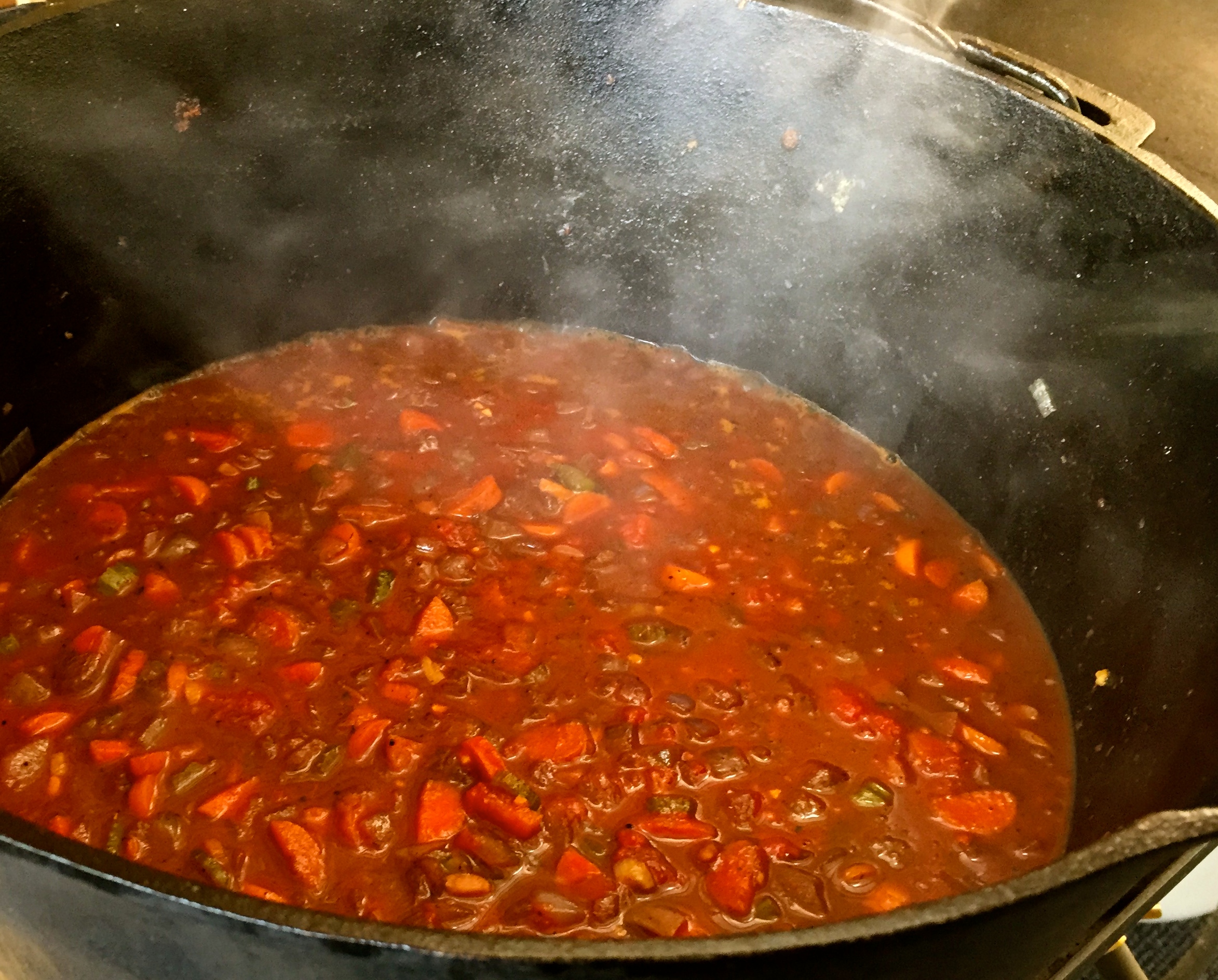
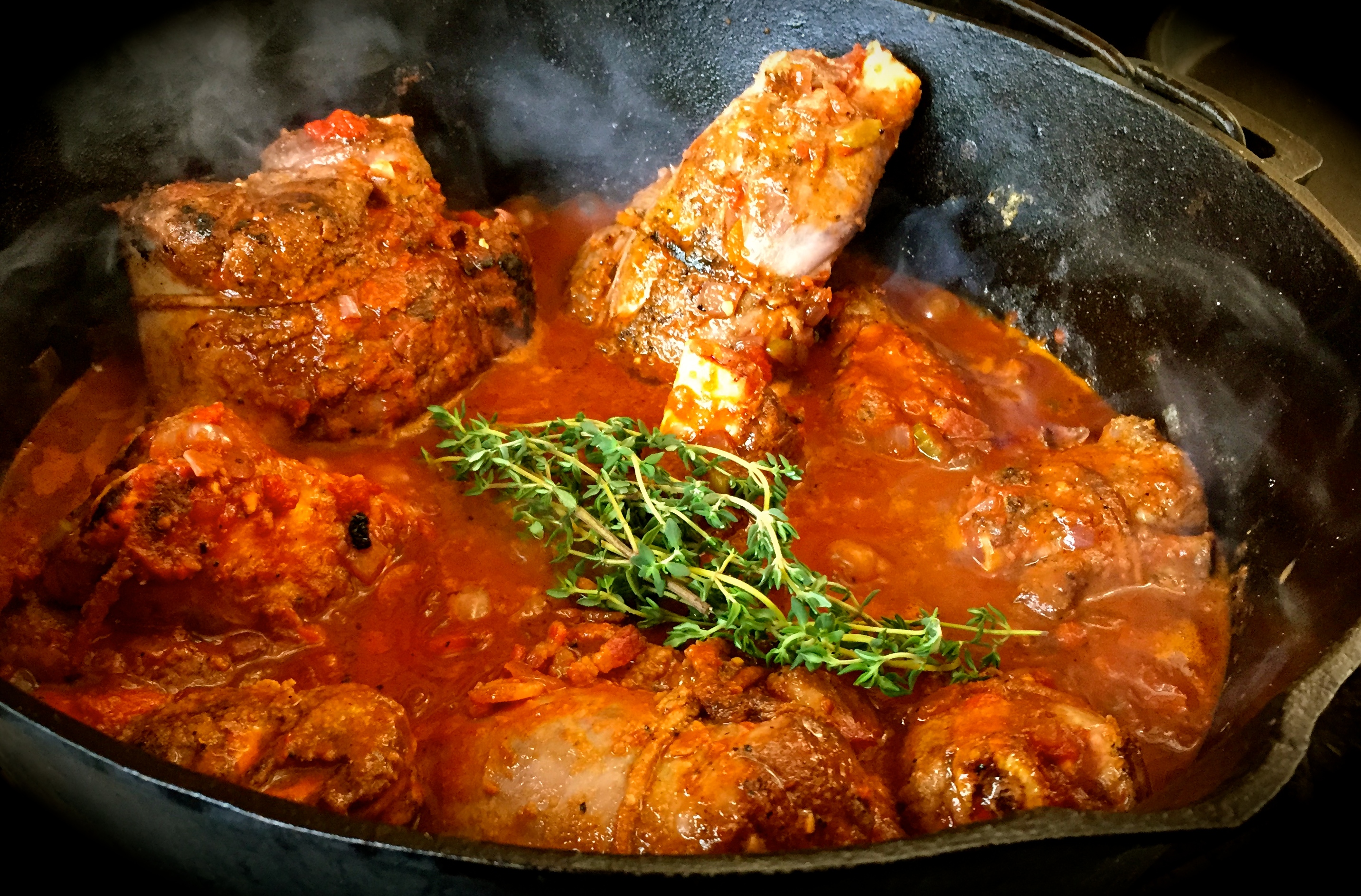

Good stuff my friend! I guess you will be coming up with a new pheasant dish next week! Have fun
Indeed.